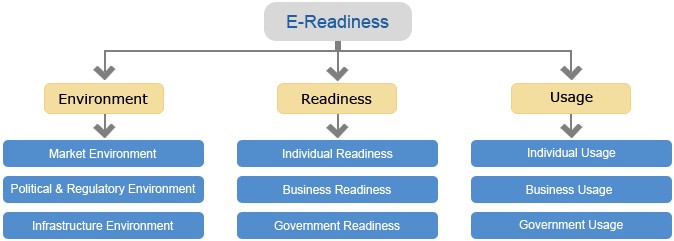Information Communication Technologies (ICTs) can be one of the key enablers of citizen centric services delivery mechanism to create easily accessible interfaces. In order to reap its benefits, its users – government, businesses & citizens – must be e-ready i.e. be able to skillfully exploit the opportunities provided by ICTs. Over the past decade or so, we have seen islands of e-governance initiatives in India at the National, State, district and even block level. These initiatives have helped these states gain a head start in e-Readiness. Objective assessment of e-Readiness helps to evolve proactive policy and robust ICT infrastructure, to make giant strides towards creating information societies and participate in knowledge economy.
The Department of Information Technology (DIT), Government of India through National Council of Applied Economic Research (NCAER) conducts e-Readiness Assessment and publishes the findings as e-Readiness Assessment report since last three years. The value of the e-Readiness Index at the State level reflects the capacity of a State to participate in the networked economy in relation to the country at large.
Framework of Analysis for E-Readiness Index of the States in India-2005 is based upon the premises that there are three important stakeholders to consider in the development and use of ICT, viz., individuals, business and governments. The degree of usage of ICT by (and hence the impact of ICT on) the three stakeholders is linked to their degrees of readiness (or capability) to use and benefit from ICT. There is a general macroeconomic and regulatory environment for ICT in which the stakeholders play out their respective roles.

The e-Readiness Index developed by DIT/NCAER is composed of variables that fall into three broad categories: ‘Environment’, ‘Readiness’ and ‘Usage’ as shown in above figure.

